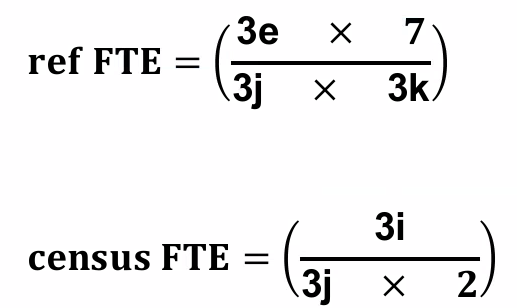Definition
While an agency’s workforce can be defined by the number of employees, this does not give a true picture of the capacity of its workforce. A better metric is Full-Time Equivalent (FTE) which measures the number of hours worked by an employee in a period, divided by the hours available to work in that same period. FTE considers various employment categories (e.g., ongoing, temporary, full-time, part-time, casual, and the variation between professions and industrial agreements).
FTE is defined as the equivalent of one position, continuously filled, full-time for the reference period, and which consists of any combination of full-time, part-time, and casual positions. This full-time FTE has a value of one. Employees working less than this full-time occupancy are expressed as a decimal fraction, or percentage, of a full-time FTE. There are situations where FTE may be greater than one (e.g., transport workers working 12 days in the census fortnight).
This standard definition is based on the total number of paid ordinary time hours worked (excludes overtime and unpaid work) and the total number of hours available to work. The FTE workforce is expressed as the total number of full-time employees required for all paid ordinary time hours worked. It is not a count of the number of employees (e.g., for a position where 37.5 hours each week is full-time, the FTE for paid ordinary time hours of 30.0 is 0.8 FTE and 37.5 hours is 1.0 FTE)
Total number of hours paid
(Weekly full-time award or contract hours) x (Number of weeks [Days/7]
Calculated using the same method for all employees, FTE is an accurate measure of resource levels across the NSW Public Sector. The PSC Analytics and Insights team measures FTE as an average for two periods:
- Reference period; and
- Last pay fortnight or census period (14 days)
Comments
The FTE is calculated by inserting the corresponding values from the Workforce Profile (WFP) into the equations. To calculate the census period FTE, the reference period is 14 (the days in the census pay period). The equation is shown reduced to its lowest term.

| Code | Item / variable name |
| 3e | Total Number of Hours worked Reference Period |
| 3k | Number of days - Reference period |
| 3j | Standard Weekly Full Time Award/Contract hours |
| 3i | Total Hours Paid (Census Period) |
Separated employees who do not have any census period hours paid will be calculated as having an FTE of ‘0’.
Differences between WFP FTE and Agency Human Resource Information Systems (HRIS) can be anticipated due to HRIS reporting FTE at a specific point in time based on position and employee occupancy. All WFP FTE is averaged over a period, even the census FTE, which is the last pay fortnight. Where an employee’s FTE is greater than one and has been paid in advance or overpaid, agencies should adjust the paid hours items used to calculate the FTE, to reflect the employees’ worked hours. If the hours are not adjusted, the agency FTE figures may be distorted. The alternate way to adjust FTE (if necessary) is by using the FTE override data items 8c and/or 8d.
References
Related content
| Relation | Count |
|---|---|
| Metadata that references this Glossary Item | 1 |